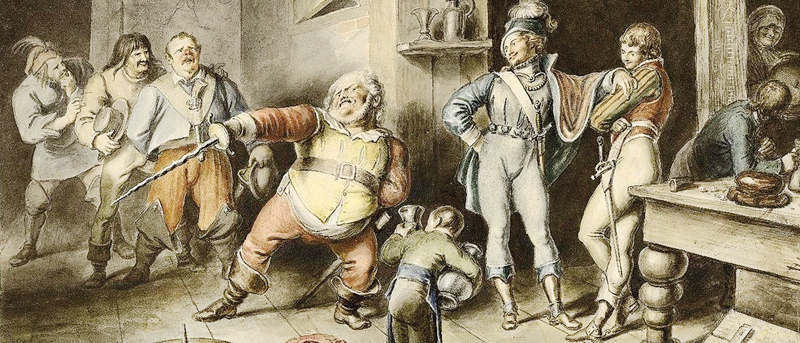I teach both fiction and creative nonfiction classes, during which my nonfiction students fiercely debate questions that my fiction students don’t even ask. The nonfiction writers wonder how much they’re allowed to speculate, how and when to fill in the gaps of memory or fact; the fiction writers dig in a sandbox seemingly without walls or rules. Right up until you put the word “historical” in front of “fiction.”
Then, we’re dismayed at the sounds our shovels make as they clang against immoveable, hard-edged facts. We start tripping over walls and wondering whether we’ve stumbled into another genre altogether, biography or fantasy. In this sandbox full of information, we look not just for new tools but new rules, a code of conduct for combining fiction and fact.
While researching and writing a novel in which essentially every character was based on someone who had really existed, I struggled constantly with feeling like a literary grave robber, or just a subpar historian. Depicting fictional versions of factual people has been with us as long as literature itself (think of Greek epics, or Shakespeare’s history plays), but I still found myself desperate for permission. I changed the characters’ names away from their real ones, trying to make them more malleable, more mine, to lessen the sense of obligation I felt towards the historical record. Then I realized I didn’t actually want to take the liberties I’d granted myself, and changed the names all back. I did this multiple times.
I think what I really wanted was a visitation from beyond the grave, with each of my characters assuring me that I’d really nailed it, they loved the book, these new versions of themselves were so true! But in lieu of a séance, here are five permissions I wish I’d given myself earlier, and can perhaps give to someone else instead.
Permission #1: A character need not be nor have a diagnosis.
Good fiction is as much about “why?” as it is about the “what if?” of a plot unfolding. But this can translate to an impulse to explain characters to an unhelpful, unrealistic degree.
In The New Yorker, Jill Lepore poked some fun at the author of a 2010 George Washington biography for providing prodigious detail about Washington’s mother, a woman about whom very little is actually known. A 19th-century biographer “thought he knew how Washington wanted to be remembered, but he never supposed he knew what it felt like to be Washington. [The modern biographer] does, not because he knows more but because he thinks differently about what it is to understand someone, which means that he also thinks a whole lot differently about feeling and understanding than Washington did—and that, right there, is the problem. . . . The diagnosis has supplanted the document.”
A problem for a biographer is not necessarily a problem for a novelist, who should absolutely consider what it felt like to be Washington. But where both the biographer and novelist can run into trouble is when the impulse to understand becomes the impulse to over-explain. Obviously fiction concerns itself with why people do the things they do. But those answers for historical characters can be every bit as contradictory and complex as the answers for wholly invented, contemporary characters. A + B rarely equals exactly C in real life.
You do not need to arrange your book in any particular way, to discard altogether the slower or more unlikely moments that make up a life.
“I believe that people should write biographies only about people they love, or understand, or both,” the writer Penelope Fitzgerald has said. “Novels, on the other hand, are often better if they’re about people the writer doesn’t like very much.”
Permission #2: Not every painting needs to be a portrait.
There can’t be many better “great man of history” exemplars than Hilary Mantel’s Wolf Hall books, but part of what I enjoy in those books is the effortless inclusion of details like the French ambassador Chapuis’ unlikely hat, or Ann’s yellow gown. The books also provide, despite the close narrative focus on Cromwell’s ascendancy, a rich sense of the world in which he operates, a world that makes his maneuvering both necessary and dangerous.
The books provide a portrait of a single historical figure, but Mantel also displays the skills of a painter of landscapes, of still lifes, of action, even of collage.
Tyehimba Jess’s Olio (a word the epigraph defines as “hodgepodge” or “miscellaneous collection” as well as the name for the second act of minstrel shows) manages to tackle, through strategic collage, an entire era of music and the people who made it.
Peter Ho Davies’s The Fortunes is composed of four separate sections that provide very different glimpses into Chinese-American history. Kelcey Parker’s novella Liliane’s Balcony, told through a variety of points of view, is less about Frank Lloyd Wright or the people who commissioned Falling Water, as it is about the house itself. A book about even the most accomplished individual can be, should be, about more than that one person. - Lit Hub



Add new comment